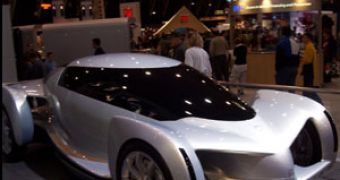An important breakthrough has been made in the field of hydrogen-fueled cars. The new storage technology has overcome one of the biggest shortcomings of current technology by increasing the car's autonomy up to 300 miles.
A team from the Universities of Birmingham and Oxford and the Rutherford Appleton Laboratory in Oxfordshire, under the auspices of the UK Sustainable Hydrogen Energy Consortium (UK-SHEC) has developed a new approach, which could make the storage volume and pressure required by hydrogen decrease dramatically.
This was attempted before, but it was not possible using current hydrogen storage applications and there is a major drawback of cars running of this alternative fuel source. Now, the project, funded by the SUPERGEN (Sustainable Power Generation and Supply) initiative, seems to have finally done it.
Normal fuel cells produce energy from the electrochemical reactions between hydrogen and oxygen. The best fuel cells available on the market have a range of 200 miles tops, so to increase it to 300 miles would require a hydrogen storage tank the size of a double-decker bus.
The new development involves a well-established process called "chemisorption", in which atoms of a gas are absorbed into the crystal structure of a solid-state material and then released when needed. After thoroughly testing thousands of chemical compounds in a solid state, they have managed to produce a light, cheap, readily available material which would enable the absorption/desorption process to take place rapidly and safely at typical fuel cell operating temperatures.
It's a variety of lithium hydride, with the chemical formula Li4BN3H10, which exhibits the optimum mix of properties and could reveal even greater abilities after further investigations.
"This could be a major step towards the breakthrough that the fuel cell industry and the transport sector have waited for," says UK-SHEC's Project Co-ordinator Professor Peter Edwards of the University of Oxford.

 14 DAY TRIAL //
14 DAY TRIAL //